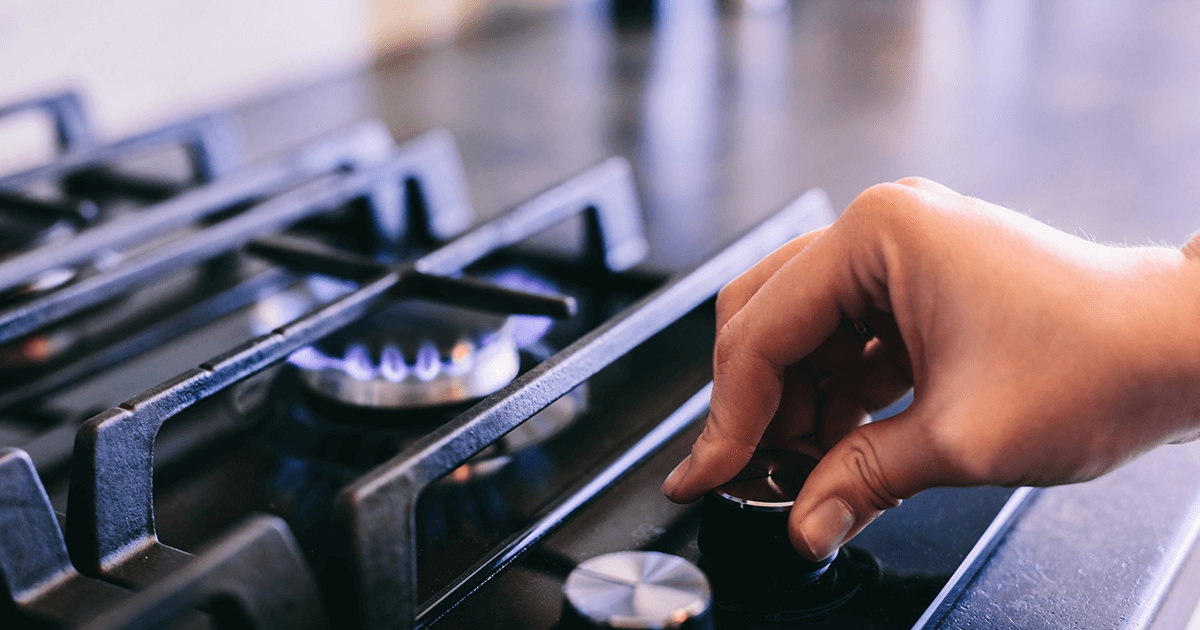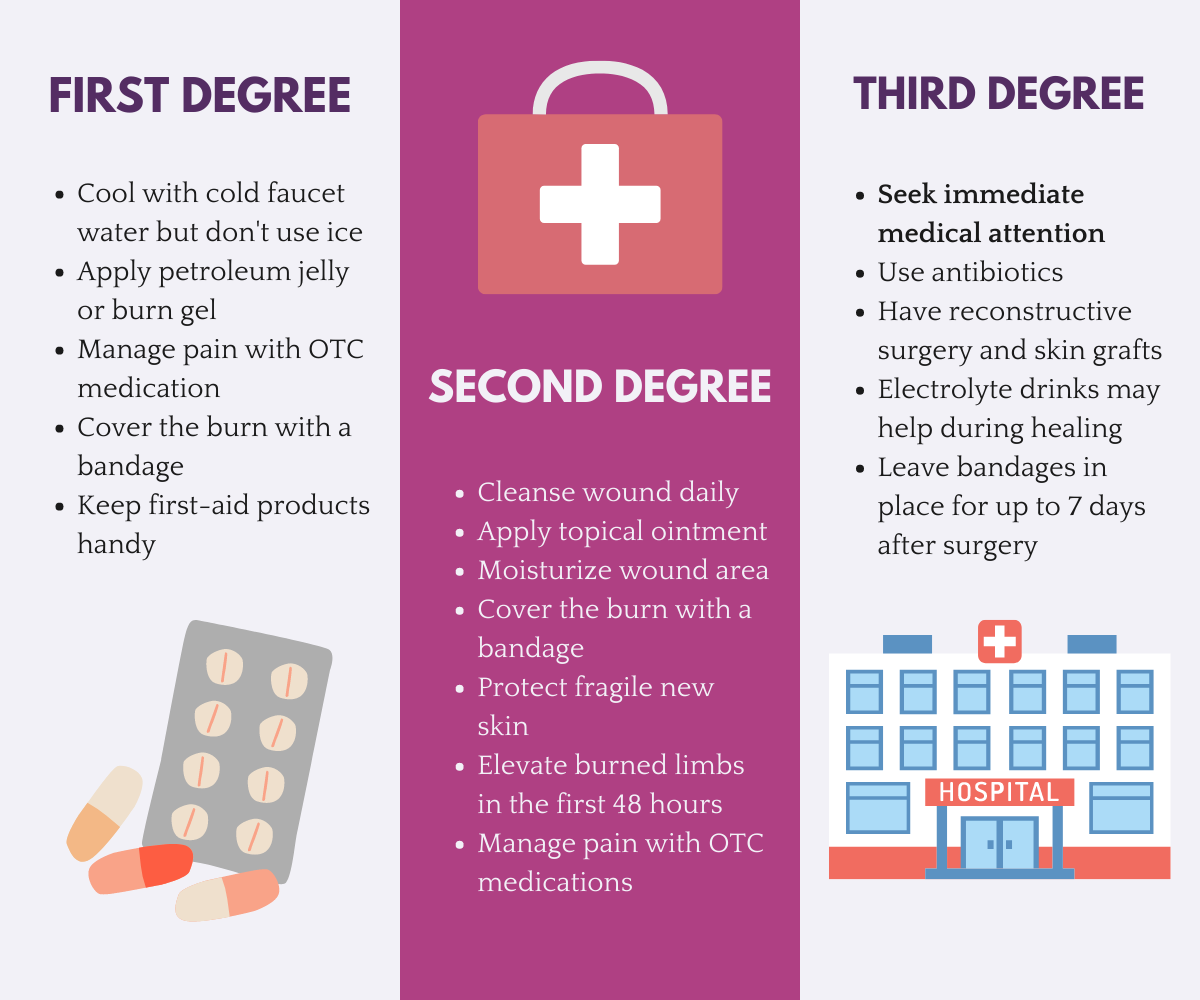
Burn wounds are some of the most painful and challenging injuries humans can experience. Burns are the result of contact with hot sources such as flames, hot objects or liquids, steam, chemicals or electricity. Each year, 1.1 million burn victims require medical care according to the Center for Disease Control.
Burn wounds are classified according to their severity as first-, second- or third-degree and higher. This depends on the depth of the burn and the length of time exposed with the hot substance or object. Burn wounds may destroy multiple layers of the skin and increase the chances of infection. Therefore, careful management of a burn wound throughout the healing process is extremely important. Caregivers should follow the healthcare professionals’ instructions and ensure that the proper burn care products are on hand. The following are some guidelines to help you, your loved one or patient successfully heal from a burn wound.
Levels of a Burn Wound
The levels of injury resulting in a burn wound are classified as follows:
First-degree Burns
These are the mildest form of burns and involve only the first layer of skin, which is the epidermis. A typical first-degree or minor burn wound would be a sunburn where redness and swelling and some blistering may occur. First-degree or minor burn wounds are often treated at home.
Second-degree Burns
Also referred to as “partial thickness burns,” second-degree burns cause more pain and can penetrate the second layer of skin called the dermis. These burn wounds are prone to infection and can leave scars. These burns will blister and can even bleed – if they go deeply enough into the dermis, treatment may involve surgery.
Third-degree and Higher Burns
Sometimes called “thickness burns” these are the most serious burn wounds with damage extending to the bone in extreme cases. Survival from these severe burns depends on the size of the burn area and the depth of the burn damage. Healing these burn wounds is challenging and may often involve surgery. They are the burn wounds most prone to infection and healing takes time and patience. Often third-degree burns require skin grafts and can leave noticeable raised scarring. Although the patient may not feel pain initially as a result of damage to the nerve endings, these burn wounds may cause intense pain as they heal.
Caring for a Burn Wound
Caring for burn wound patients will depend on the degree of the burn and the nature of the burn wound. HonestMed offers a range of wound care products designed to help burn wound patients heal successfully from a burn injury. The following are some guidelines and links to products that will help caregivers during the challenging healing process.

First-degree or Minor Burn Wounds
First-degree or minor burns such as a sunburn or a kitchen burn are most often cared for at home. They typically don’t require a clinic or emergency room visit. Having the right first-aid products on hand is key to handling minor burns. The following are some guidelines for dealing with first-degree burns.
💡 Caring for First-degree Burn Wounds
- Cool and Protect the Burn Wound Area: The burn area should be cooled by holding the area under cold running water. Don’t use ice or ice water because it can damage skin cells. An ointment such as petroleum jelly can be applied to keep the area lubricated and protected while healing. HonestMed offers a number of petroleum jelly products including Vaseline impregnated dressings if you want to cover the burn wound.
- Manage Pain: If the pain in the burn area persists, applying a cooling burn gel will help relieve it. HonestMed’s Water Jel Burn Relief Topical Gel will protect the burn area and contains lidocaine to soothe pain. Over-the-counter pain relief products such as acetaminophen or ibuprofen can also help ease the pain of minor burns.
- Cover the Burn: If there are blisters, you should not attempt to open them, but you should cover the burn area with a lite sterile bandage to protect the skin as it heals. Be sure to keep the burn wound area away from the sun.
- Keep First-aid Products Handy: It’s a good idea to keep a well-stocked first-aid kit for minor cuts and burns. HonestMed offers a variety of first-aid kits that are ideal for the home or workplace.
Second-degree or Partial Thickness Burn Wounds
These are the most common burns that healthcare providers see. Healing, especially with infected burn wounds, requires a much greater level of care and patience. It is important to adhere to the healthcare provider’s instructions. The following are some general guidelines to ease the difficult process of healing second-degree burn wounds.
- Stages of Healing: Partial thickness burn wounds go through several stages of healing:
- Body Reacts: A second-degree burn activates your immune system which causes inflammation, swelling and discoloration which are all part of the healing process.
- Repair Process Begins: Below your skin’s surface, the cells work to get rid of damaged skin so new skin can develop.
- Scarring and Remodeling Occur: Scarring can accompany this level of burn wound. As the skin heals, it produces collagen, a protein responsible for forming new skin. However, it may sometimes develop into scar tissue. Scarring can be of varying degrees of severity.
💡 Key Steps in Caring for Second-degree Burn Wounds
- Cleanse the Burn Wound Every Day: Once the patient or loved one is at home, perhaps recovering from a hospital stay or doctor visit, the caregiver will need to fulfill daily tasks to ensure proper healing of the burn wound. Keeping the burn wound area clean is of primary importance. This will allow new skin to form and prevent infection. Clean a second-degree burn wound daily with mild soap and water, then gently pat it dry.
- Use Debridement Ointment: Debridement, which is the process for removing infected or nonviable tissue from a burn wound, is important for avoiding infection and promoting healing. Debridement can be done surgically or topically. Depending on the nature of the burn injury, a physician may recommend using a debridement ointment. HonestMed offers several debridement products that can aid in recovery from a second-degree burn wound.
- Moisturize the Burn Wound Area: Consult your healthcare provider, but an antibiotic cream may help in the initial stages of healing. However, do not use it for longer than two weeks because it can irritate the new skin and lengthen healing time. Over the long term, you will want to apply petroleum jelly or some other moisturizing agent to keep the skin hydrated.
- Cover the Burn Wound: Second-degree burn wounds require a cover as they heal. The new skin that is forming is particularly fragile and it’s important that the protection used doesn’t stick to the burn. HonestMed offers non-adherent dressings that are ideal for protecting sensitive skin during second-degree burn healing.
- Protect Fragile New Skin: As new skin forms to heal the burn wound, the patient should try to avoid bumping it or scraping against objects. It’s a good idea to keep new skin covered until it’s fully healed. The patient should also avoid wearing rough or tight fabrics that can irritate or tear new skin as it continues to develop.
- Keep Burned Limbs Elevated and Moving: If the second-degree burn area is on arms or legs, try to keep those limbs elevated during the first 24 to 48 hours after the injury to reduce swelling. Also, to ensure that the skin doesn’t tighten too much as it heals, try to keep the patient’s limbs moving normally as much as possible during the healing process.
- Manage Pain: The doctor may prescribe pain medication or the patient may only require over-the-counter pain meds such as acetaminophen or ibuprofen. Either way, it’s important to manage pain so that your patient or loved one can withstand the daily tasks of cleansing, debridement and movement necessary in healing second-degree burn wounds.
Third-Degree or Thickness Burn Wounds
These burn wounds are the most serious. They can extend past the epidermis to the dermis and the layer of fat below it, the hypodermis. Third-degree burns can also cause damage to hair follicles, sweat glands and nerve endings. Seek immediate care from a physician even if the patient doesn’t experience any pain. These sorts of burn wounds are very vulnerable to infection and usually require a skin graft. Third-degree level burn wounds will also have blistering, shiny moist skin and pronounced discoloration ranging from white to dark red or brown.
💡 Caring for a Third-degree Burn Wound
The steps in caring for this level of burn wound are similar to caring for second-degree burns with some exceptions. Cleansing and covering the wound are essential to healing third-degree burn wounds, but it may involve other steps. It’s important with second-degree and third-degree or higher burns to always follow the physician’s directives. The following are some general guidelines when dealing with these serious burn wounds:
- Get Immediate Medical Attention: Third-degree and higher burns are extremely serious injuries. Seeking professional treatment is crucial. Even if the burn victim is not feeling any pain, which is actually a symptom of a serious burn, a third-degree or higher burn can make the person go into shock, experience organ failure, and even die. That’s why it’s critical to immediately go to the emergency room if you suspect a third-degree or higher burn.
- Use Antibiotics: If a large area of the body has serious burn wounds, the patient may need oral or intravenous antibiotics to enable healing. Intravenous antibiotics provide a slow and steady introduction of medication. Depending on the extent of the third-degree burn wound, the physician may prescribe oral antibiotics.
- Replace Fluids: Third-degree burn wounds can result in loss of fluids especially if they cover a large area of the patient’s body. A major loss of fluids can cause a person to go into shock. The healthcare facility will likely provide intravenous fluids with electrolytes to replace what has been lost. As the patient continues to heal, adding electrolyte drinks to their diet can enhance the overall healing process. HonestMed offers a variety of electrolyte drinks and drink powders to help support healing during the recovery process.
- Have Reconstructive Surgery and Skin Grafts: The burn victim may need to have one or more skin grafts to ensure successful healing of a third-degree burn. These skin grafts vary in accordance with where the burn is located on the body, how deep the burn is and the size of the area that is damaged. A skin graft involves taking healthy skin from an unaffected area and applying it to the burn wound so that it forms new protective skin as the burn wound heals.
- Bandages May Not be Replaced Daily: Especially if there’s been a skin graft, the bandages may stay in place for 4-7 days immediately following surgery. Once bandages are removed it’s important to protect the skin graft area for at least twelve months. Keep it protected with sunscreen lotion and loose clothing.
Rely on HonestMed for Burn Wound Care Products and Support
Recovering from a serious burn wound takes time and patience for both caregivers and burn patients. Following your physician’s orders is of paramount importance, but having the right supplies on hand is also a critical factor in the healing process. HonestMed provides affordable burn wound care with fast delivery. We are dedicated to providing support for any level of burn wound. Browse our essential burn wound supplies as well as hundreds of other products that support your health needs and help you fulfill your daily tasks with ease. Learn more by speaking to an HonestMed Care Specialist at (833) 933-2323. We’re here to provide you with product knowledge, support, and expertise to ensure you get the right products for your unique needs and budget. Check out our other published articles on caregiving and more!



